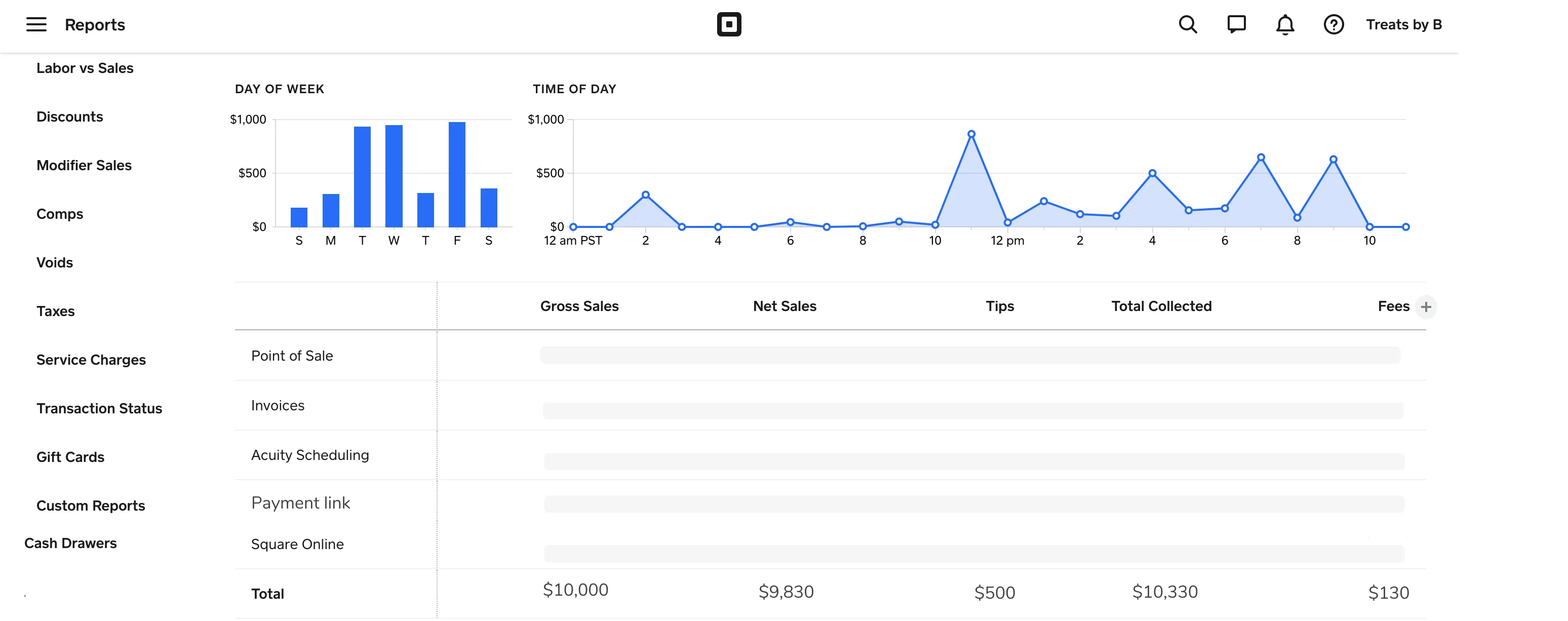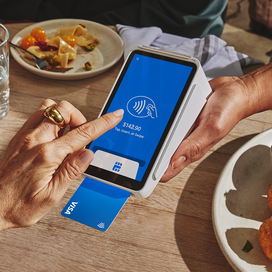Table of contents
Like many entrepreneurs, Brea Gladney of Treats by B is a self-starter who dives in head first with passion and energy — and trusts that she will figure out the details later.
In high school a friend encouraged her to sell her one-of-a-kind creative confections, and she decided to go for it. By the time she was 20 years old, Gladney had started her own business and was attending networking events to deepen her understanding of the entrepreneurial journey. People connected with her colorful desserts, and her business grew. With more paying customers came more opportunities — and much more paperwork.
Like many small-business owners, Gladney was self-taught when it came to managing her finances. She used multiple peer-to-peer payment apps and found it quickly became messy to keep track of payments. “When you think about it,” Gladney says, “they’re meant for personal use. They just didn’t give me what I needed to stay organized in my business.”
At her mother’s suggestion, and after she observed her mentor using Square for his own food business, Gladney decided to give Square a try. She quickly transitioned from collecting payments through multiple platforms to managing all of her business finances with Square.
As a small-business owner, how do you know when it’s time to transition from “DM me your order and payment account username” to a more robust set of commerce tools? Here are a few key signs that Gladney experienced before she made the switch.
1. Your taxes have become stressful.
Gladney remembers how overwhelmed she used to feel each time tax season rolled around. “At the end of the year, I was stuck trying to put all my taxes together and trying to do everything at once. When you have statements for 12 months for five different platforms, that’s a lot to look through.”
If you scramble every tax season trying to gather documents, receipts, and payments from a variety of sources, it’s likely time to switch to managing your business finances with a more comprehensive system.
Gladney knew she was at that point when taxes were a source of stress that kept coming up over and over again. “It came to a point where I didn’t want to have to go through all of these different platforms, whether it’s at the end of the year, the end of the month, or the end of the week,” she recalls. “Now I’m seeing all of my money in one place with Square versus seeing it in five or six different places.”
This is a mock-up sales report shows how payments are broken down. In her actual sales report, Gladney is able to see exactly how much money comes in from different types of payments.
2. You struggle to get payments in a timely or efficient manner.
If you spend more time talking to customers about how to pay than actually working on your craft, this is another sign that it’s time to graduate to a more robust system.
As a small-business owner, you can’t afford to spend extra hours coordinating a payment and waiting for the funds to deposit into your bank account. It’s time-consuming to walk people through the steps to send them your payment username, to connect through their app, and to verify that it’s you before they can send you a payment.
Gladney says that Square has significantly cut down the amount of time she spends explaining the payment process or hunting down past-due invoices. “It’s so direct. On my phone I can give people their due dates. If I want to let them split payments, I can put their payment schedule on there for them. I can attach photos to the due date details. Everything is there.”
When a customer clicks the pay link in her Instagram bio to purchase, she’s able to send and accept payments through Square right away. “They give me their phone number, and within 15 minutes I can be processing a $300 transaction. It’s that quick.”
It isn’t just about convenience. For small-business owners, getting paid in a timely fashion makes all the difference in keeping up with business expenses, bills, and inventory. Gladney describes how she helped a fellow business owner who struggled with her cash flow. Her bank took a long time to verify payments through peer-to-peer apps, and waiting for those payments to be available impacted her operations. Gladney pointed out that she could leverage her Square Debit Card by accessing money instantly from Square sales.
Sending invoices or pay links with Square cuts down on the time it takes to receive payment. “When customers pay, it goes into your account. You don’t have to wait long for it to process. If you have the Square Debit Card, even better, because now you can keep track of all your expenses on that too,” Gladney says.
3. You sell different types of products, or you’re ready to expand into new offerings.
If you are branching out into new offerings or different ways to sell products, it’s a good time to switch to a more robust system to stay organized across your business. Gladney offers custom cakes, bulk orders, and high-end catering, and the payment process differs for each offering. Custom orders, for example, require invoices, while pop-up sales require payment links. “I need tools where I can do all of those things essentially in one place, without having to use platforms that are not really meant for that.”
Gladney has also expanded her business geographically by traveling to other cities to offer her creations to new audiences. When she visited Dallas she used Square to provide a separate payment link for orders in Dallas, despite normally operating in Portland. “Now I run my business in two places, California and Oregon. I want to expand myself even more, and by using Square I’m able to do that.”
4. Managing your money takes away from the parts of your business that you love.
The truth is, your business is never too small to be using a commerce tool like Square — even if you are a team of one. No matter how much revenue you earn, if it has become exhausting to keep track of your money, you are ready for the cash flow and workflow efficiencies of a more robust system.
One reason Gladney switched to Square is that managing her business finances took too much time away from running her actual business. “It can get very exhausting trying to pull all of those things together,” she says. Since she transitioned to managing all of her invoicing, payments, and finances through Square, tracking her business funds has become much simpler. “I can get all of my reports literally in one place.”
Handling payments should be quick and painless so you can spend more time on the parts of your business that you love. “I want to give my customers [a way to pay] that’s not only easy for them, but easy for me,” Gladney says. “I have everything in one place, and I’m so happy.”
Square makes it easy for small-business owners to spend more time on their business.
Gladney’s advice to other small-business owners is to take time to organize a system for your finances as early as you can so it doesn’t take you away from spending time on your business. “Do your research on where to manage your money and how to manage it.”
The Square ecosystem makes it easy for small-business owners to use the features they need and to skip what they don’t. As Gladney has discovered through her use of Square, “The more that I kept using it, the more I kept finding out that it has these things that either I needed or didn’t know I needed until I saw them.”
Don’t let the stress of managing your money in multiple places take away from the passion you have for your business. “We know [entrepreneurs] are going to love what they do. That’s why they want to do it. I want to help teach people how to do it so they don’t have to spend years like I did trying to figure it out,” Gladney says.
Learn more about how you can use Square to manage your payments, invoices, and tax documents all in one place.
![]()
















